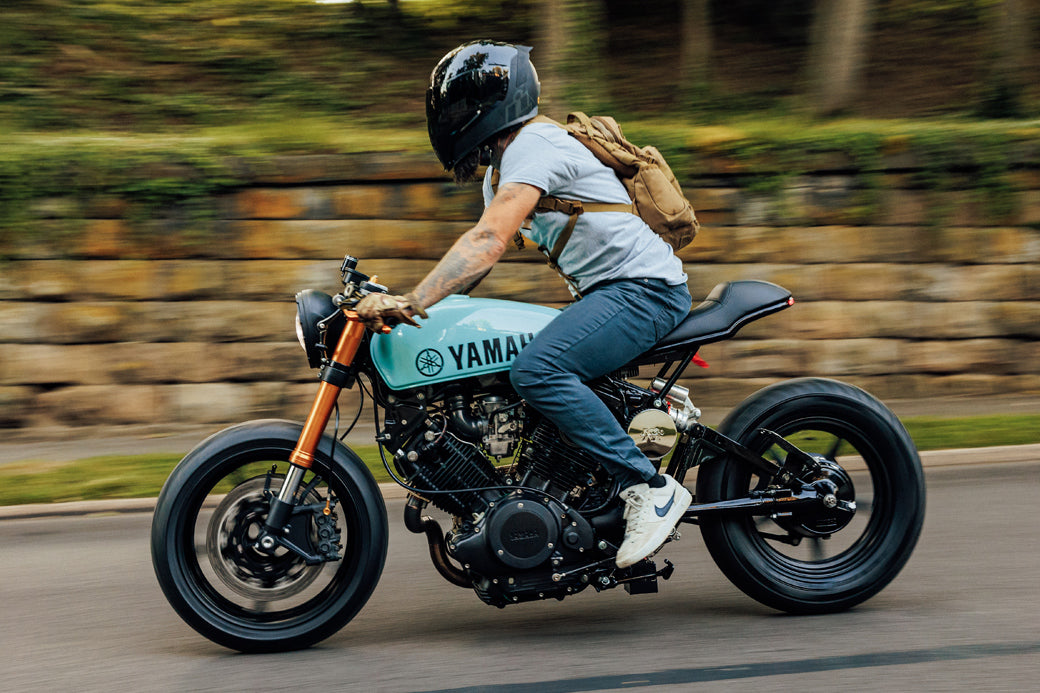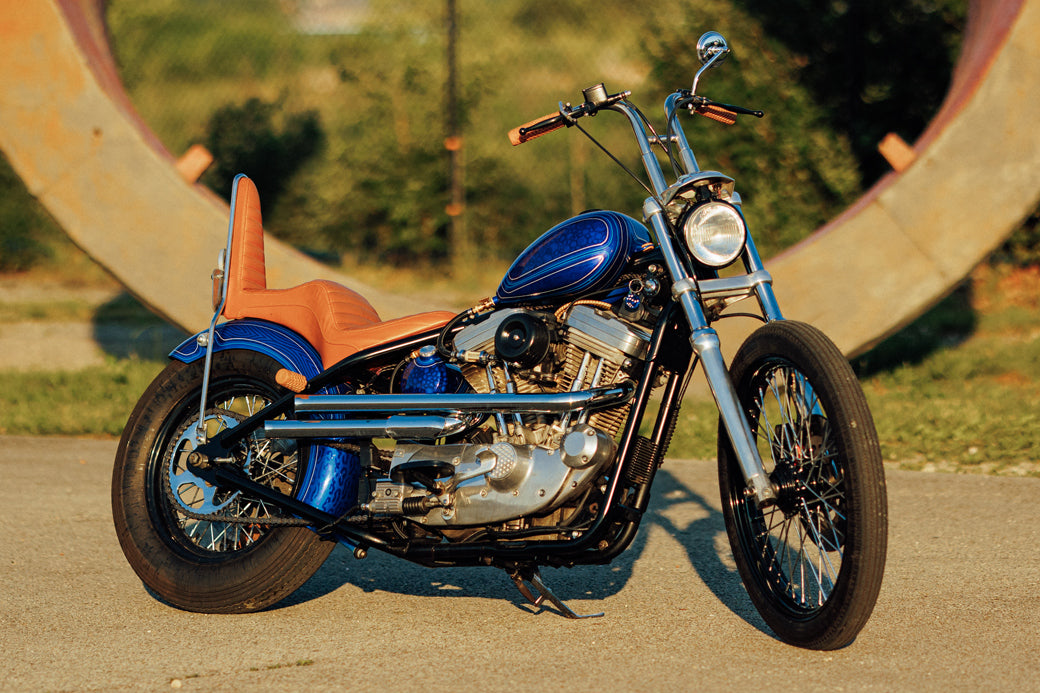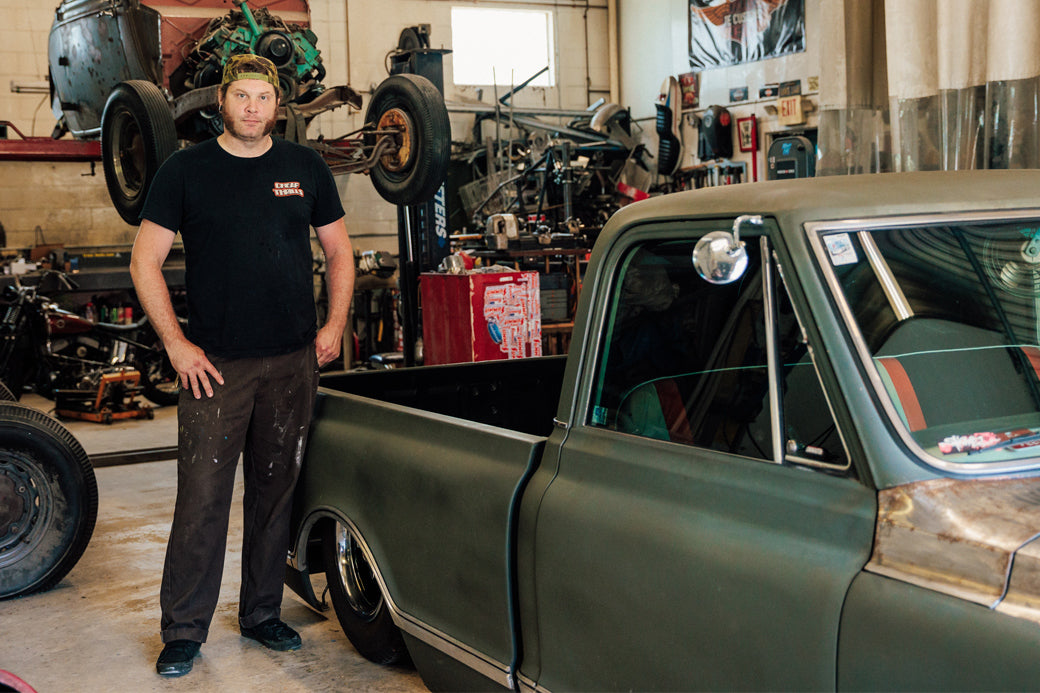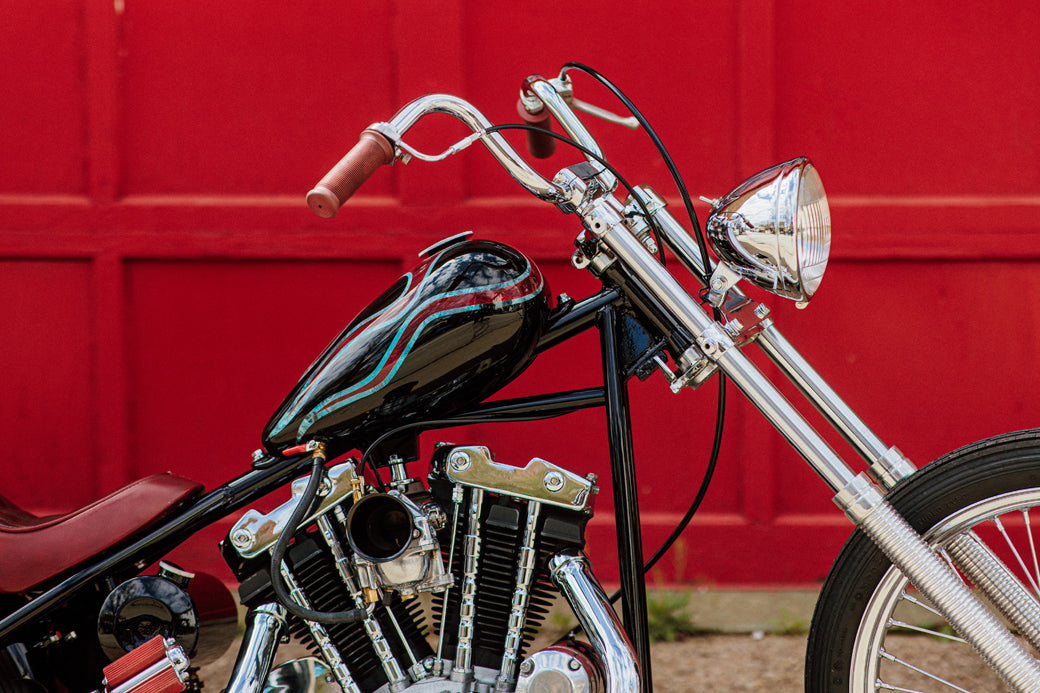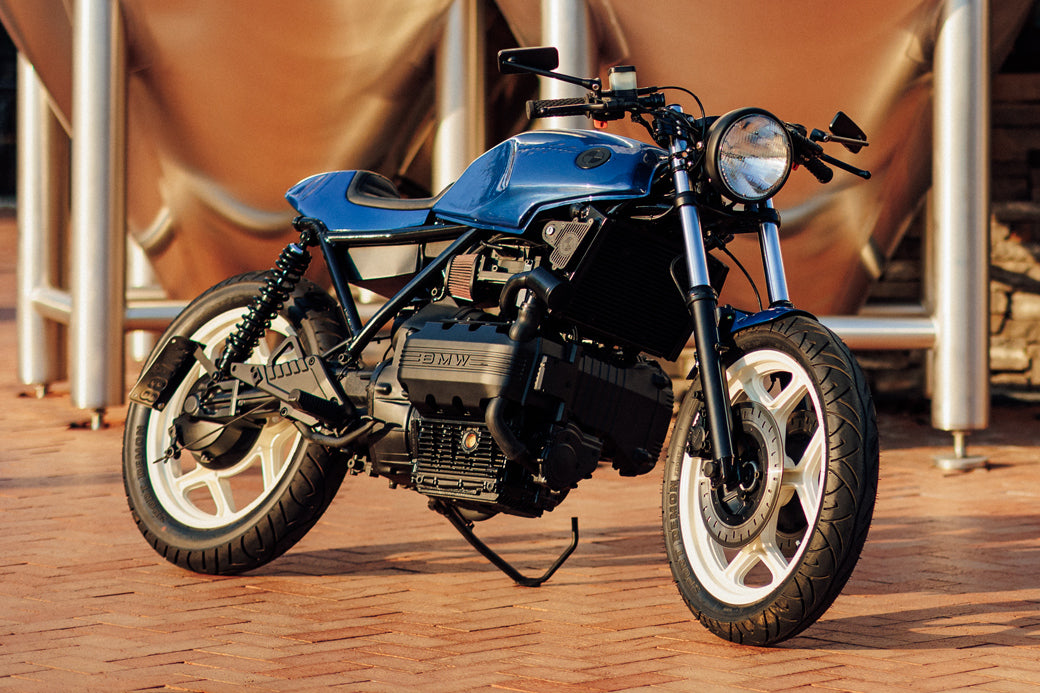Ryan Zapko: I got my first bike at age sixteen and started wrenching then. My dad was an aircraft mechanic, so I just kind of absorbed things from him growing up. Throughout my life, I’d work on anything from cars, trucks, bikes, Jeeps, and even recently a Tesla. There’s an appreciation for everything.

RZ: I never considered myself exclusive to any brand of bike. I raced Honda superbikes for years at places like Mid Ohio and Pittsburgh Raceway. While I really enjoyed that part of it, I like Harleys, too. We would fly to Phoenix in the winter and ride Harleys through Sedona and the Grand Canyon for a day or two—just to get that fix. There are niches that some guys won’t leave, but I think it’s fun to do stuff that’s sort of the thumb in the eye of both Harley and sportbike guys.
RZ: Everything’s an adrenaline rush. Flying suited my need for speed, much like motorcycles. I like pushing boundaries, and I think this particular bike does that. It’s not your typical Sportster build.
RZ: It started a few years ago. I found a Sportster 883 around Bellevue, brought it home, and started chopping it up. All of the work was done in my garage. The motor was torn down and made into a 1250cc. I replaced the clutch, cam, and ignition before fitting a Suzuki GSXR 750 front end and brake setup. The Harley wheel didn’t work with the Suzuki axle, so it was a bit of a challenge to fit a spoked wheel. Ohlins shocks were added to the rear, along with a chain drive, custom rear sets, and cafe tail section. Lastly, I spray painted the tank and got a paint pen to do all of the details. I really enjoy some of the ingenuity of mixing things up, and I’m proud that it’s never been on a trailer. I ride it everywhere.
RZ: I think it’s more of a feel bike. It’s like a backroad bomber with no speedometer or tach. You don’t know whether you’re going forty-five or sixty-five, but it doesn’t matter because it’s all about how much fun you’re having. It’s fun to play around with the suspension rebound and compression damping, which is typically something you couldn’t do on a Sportster.


RZ: Spirit of Independence started by doing mechanical and fabrication work for others. The name and logo have a number of meanings but it starts with the thirty feathers. The number has significance because it’s the age at which Jesus began teaching, the age that John the Baptist began baptizing, and the amount of currency that Judas sold out Jesus for. Basically, it’s biblically when you discover yourself and become who you are but also a sign of sacrifice. For instance, a lot of words and lyrics on the tank seem a bit in your face. At the time I was going through a tough phase and finding my independence, and the bike was an outlet.
RZ: I’m hoping that with this pandemic, some people found the opportunity to wrench a little bit in their garage. A positive result of the quarantine would be that maybe a year from now we’ll see some pretty creative builds as a result of time forced at home. I think new powersports are tough right now. The prices coupled with people struggling financially might push manufacturers to start making more affordable or simpler options.
RZ: I think it’s about putting your own stamp on it. It’s been a blank canvas for customization or modification from back in the 50s and 60s up until today. It doesn’t have to be one thing. You don’t have to stick with any particular style, just do whatever you want.











SPIRIT OF INDEPENDENCE


